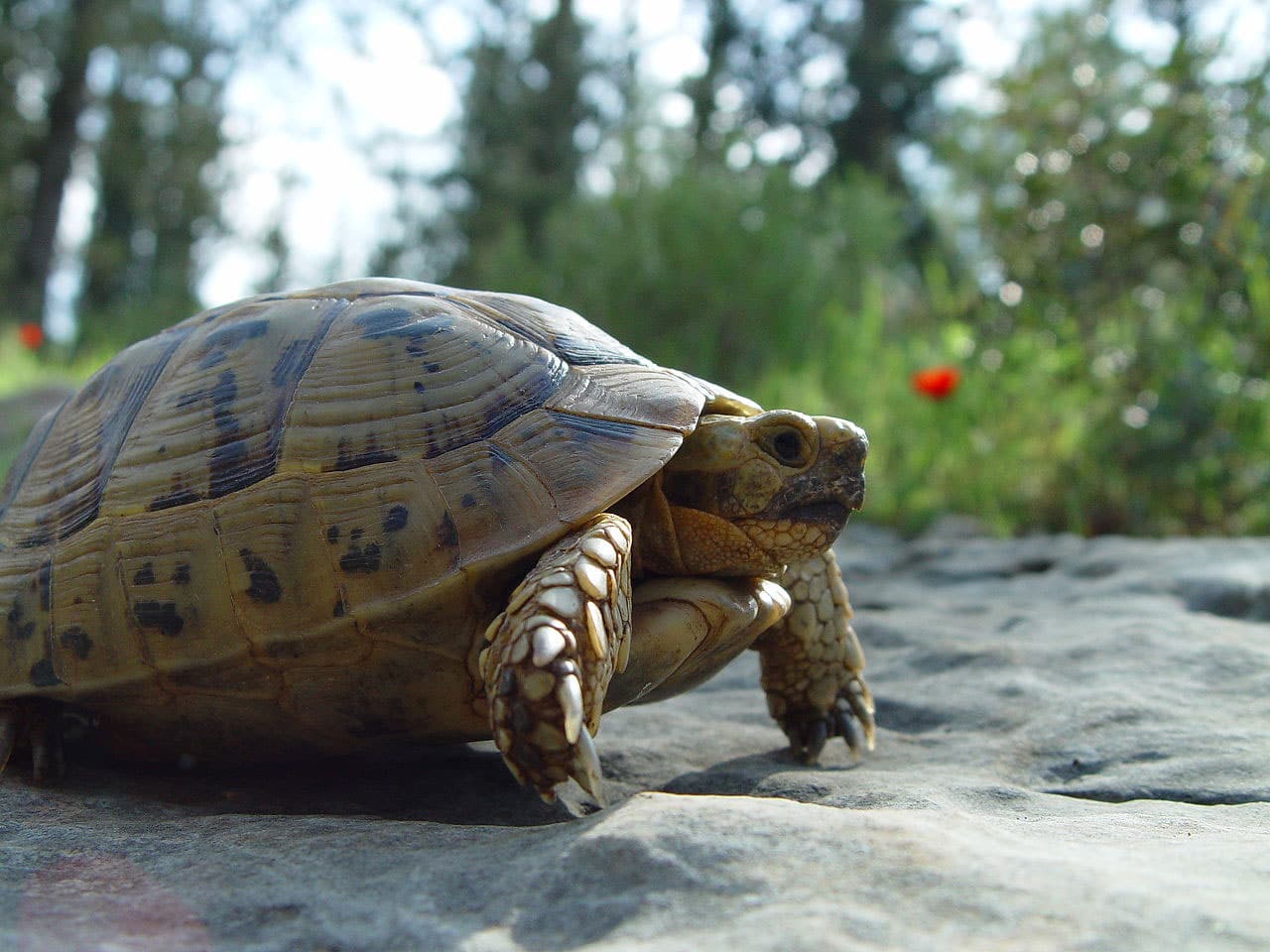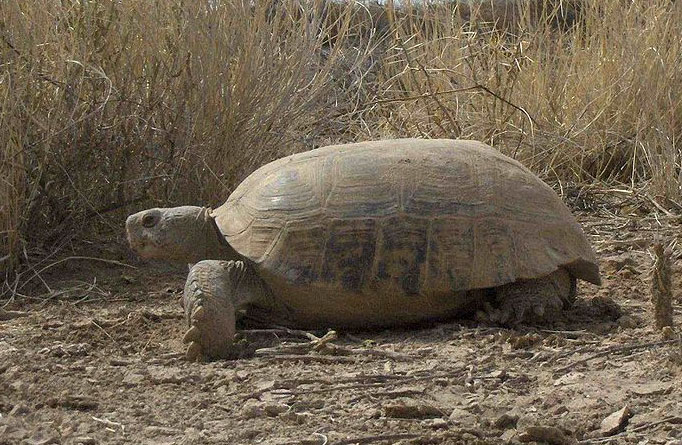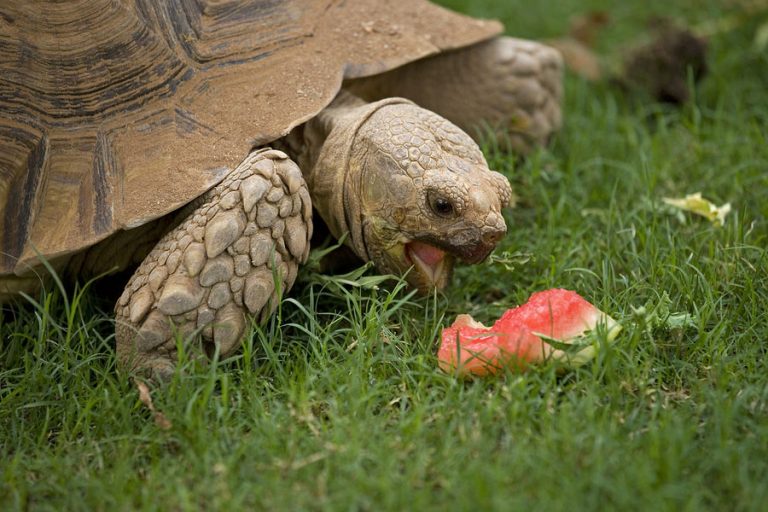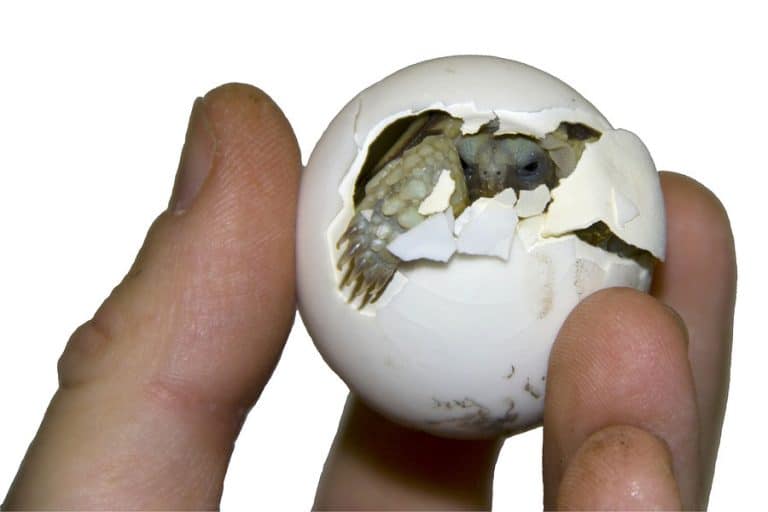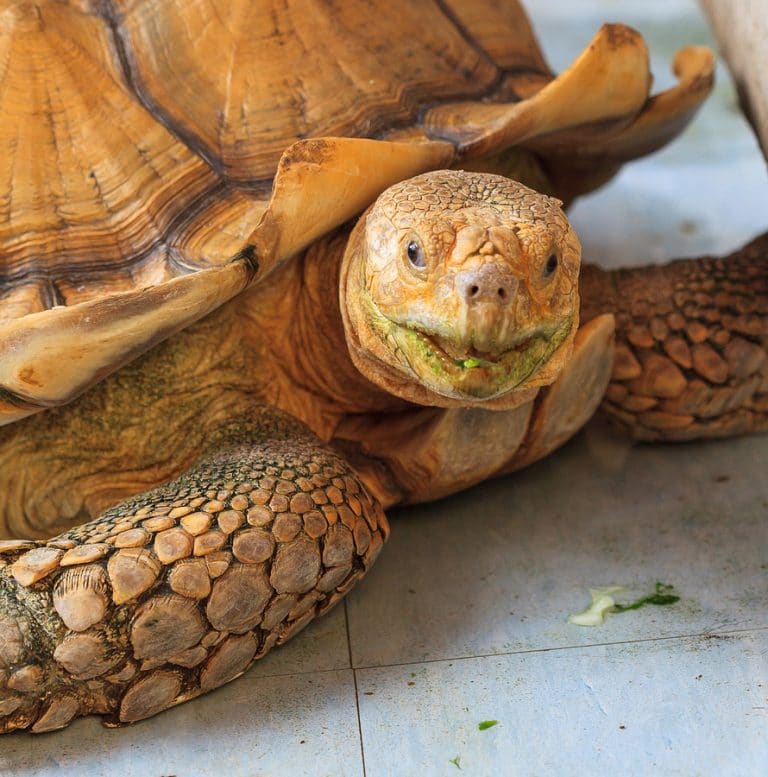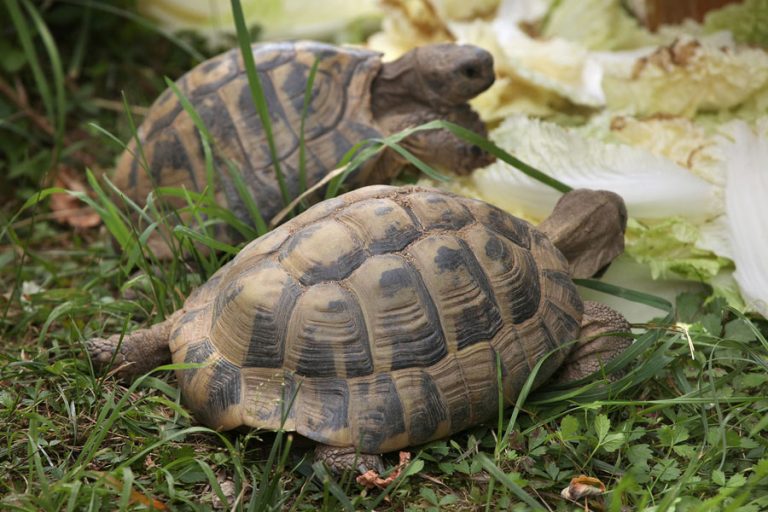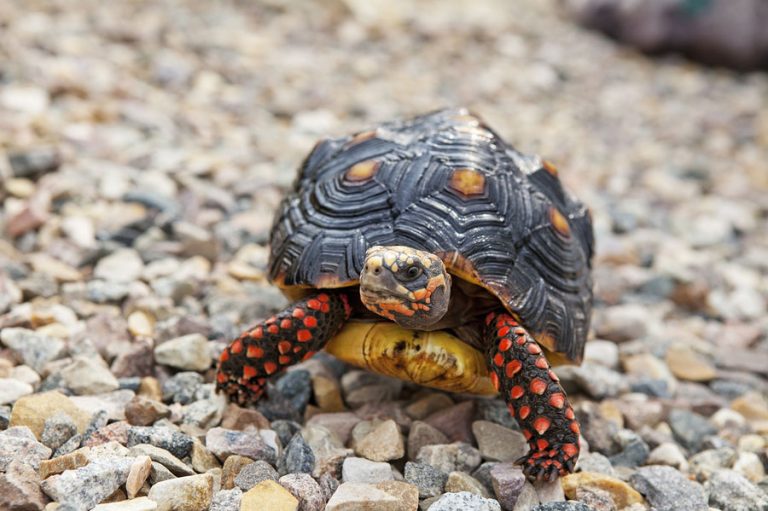Greek Tortoise
Scientific Classification
| Kingdom: | Animalia |
| Phylum: | Chordata |
| Class: | Reptilia |
| Order: | Testudines |
| Suborder: | Cryptodira |
| Family: | Testudinidae |
| Genus: | Testudo |
| Species: | T. graeca |
| Binomial name: | Testudo graeca |
The Greek Tortoises have another name, Spur-thigh Tortoise. These tortoises vary a lot in color and size. Their care requirements also vary. This diversity is due to the fact that they originate from an immense geographical area encompassing three continents. As a result of the various environments they have adapted to, there are a huge number of varieties. There are on record 20 published sub-species of the Greek tortoise and the list is expanding.
There are five species of the Mediterranean tortoise. They belong to the genus Testudo and the family Testudinidae. The Greek tortoise is one of them. The other four species are Russian tortoise, Egyptian tortoise, Hermann’s tortoise and marginated tortoise.

Anatomy
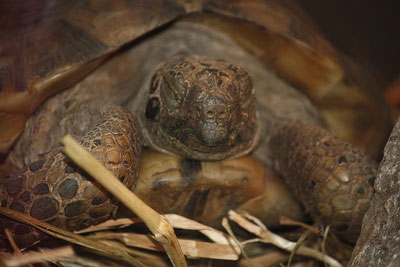
Greek tortoises are small. Most reach only about 20 centimeters or 8 inches in length. Of course, there are certain varieties that grow about 30 centimeters or 12 inches in length. The coloration is not too bright, but, variable and pleasant. The “spurs” that you can see on their thighs, give them their name. The spurs are small tubercles. Each side of the tail has one.
Spur tortoises, as a group, possess almost rectangular upper shells or carapaces. The colors vary from dark brown to striking yellow. They have variable dark accents, from flecks to spots and patches.
Golden Greeks are very attractive tortoises. Even though there is no indication as to what sub-species they belong to, they do share common traits.
Behavior
The Greek tortoise can be quite responsive and readily come to you, particularly for food. You should take care not to handle them too much. They are certainly relaxed, amiable and fairly interactive, they stress easily, like most reptiles.
Habitat
You can find these creatures in a variety of locations. You can see them in southern parts of Spain, Eastern Europe, North Africa, the Middle East and some other parts of Asia. Their environments vary from the dunes on the seashore to rock filled mountain steppes. Usually we find these tortoises in very dry and arid areas with high temperatures in summer. They feed on the sparse grass and plant growth in these places.
As a Pet
Breeding
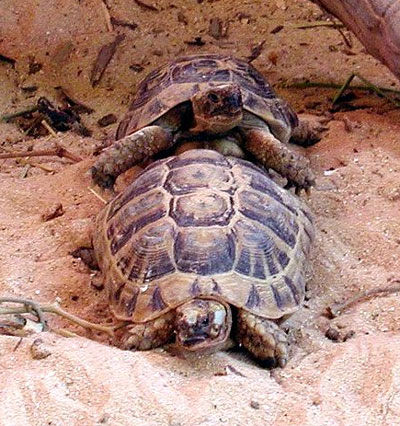
Greek tortoises come from diverse habitats in divergent areas. Some varieties hibernate in winter. Others could be very active in summer. Some others never hibernate or are active. Naturally, there is a lot of variance in their breeding techniques. Some tortoise varieties require a winter cooling period. For others, it could be harmful or even fatal. You should not try to hibernate this tortoise pet unless you can pinpoint exactly where it originates from.
Greek tortoises breed in the spring season. Nesting happens weeks later. The females may lay one or more clutches, with each clutch having 1 to 12 eggs. Some females will bury the eggs in well formed nests. For others, just a depression will do. All they do is to sprinkle a bit of dirt over the eggs.
Housing
Wooden vivariums are preferable to glass vivariums for the Greek tortoise. Wooden ones retain heat better than glass. These tortoises are very slow growers. For youngsters, the vivarium can be 36”x18”x18” in size. For adults, the ideal size would be 48”x24”x24”. This will ensure that your pet will get enough space to move around.
You can use Beech woodchip for substrate. Sands, including calci sands, could create health problems for your pet tortoise when they ingest it accidentally. Greek tortoises are very active and they love to climb. You should provide some climbing areas. Make sure that they ate not too steep since the tortoises can fall off. Artificial plants can make the vivarium bright and add to the natural effect.
Food
Brussel tops, clover, curly kale, coriander, carrot, courgette, dandelions, honey suckle, leafy salads, parsley, parsnip, peppers, spring greens and small quantities of non-citrus fruits are good vegetables to feed your pets. You must avoid Buttercup, cabbage, citric fruits, onions, Iceberg lettuce, tomato, and the like. It would be a good practice to dust the vegetables with Nutrobal before giving them to your pets.
Handling
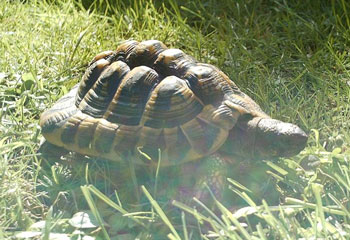
These tortoises are very shy. You should provide various shelters to give your pets a secure feeling. They will not enjoy your handling them. They often retreat into the shells and stay there with their scaly legs protecting their heads. If you are lucky, you may get a pet that is quite tame and outgoing. They could be from artificial hatcheries, exposed to interaction for years.

Having discovered a fondness for insects while pursuing her degree in Biology, Randi Jones was quite bugged to know that people usually dismissed these little creatures as “creepy-crawlies”.

